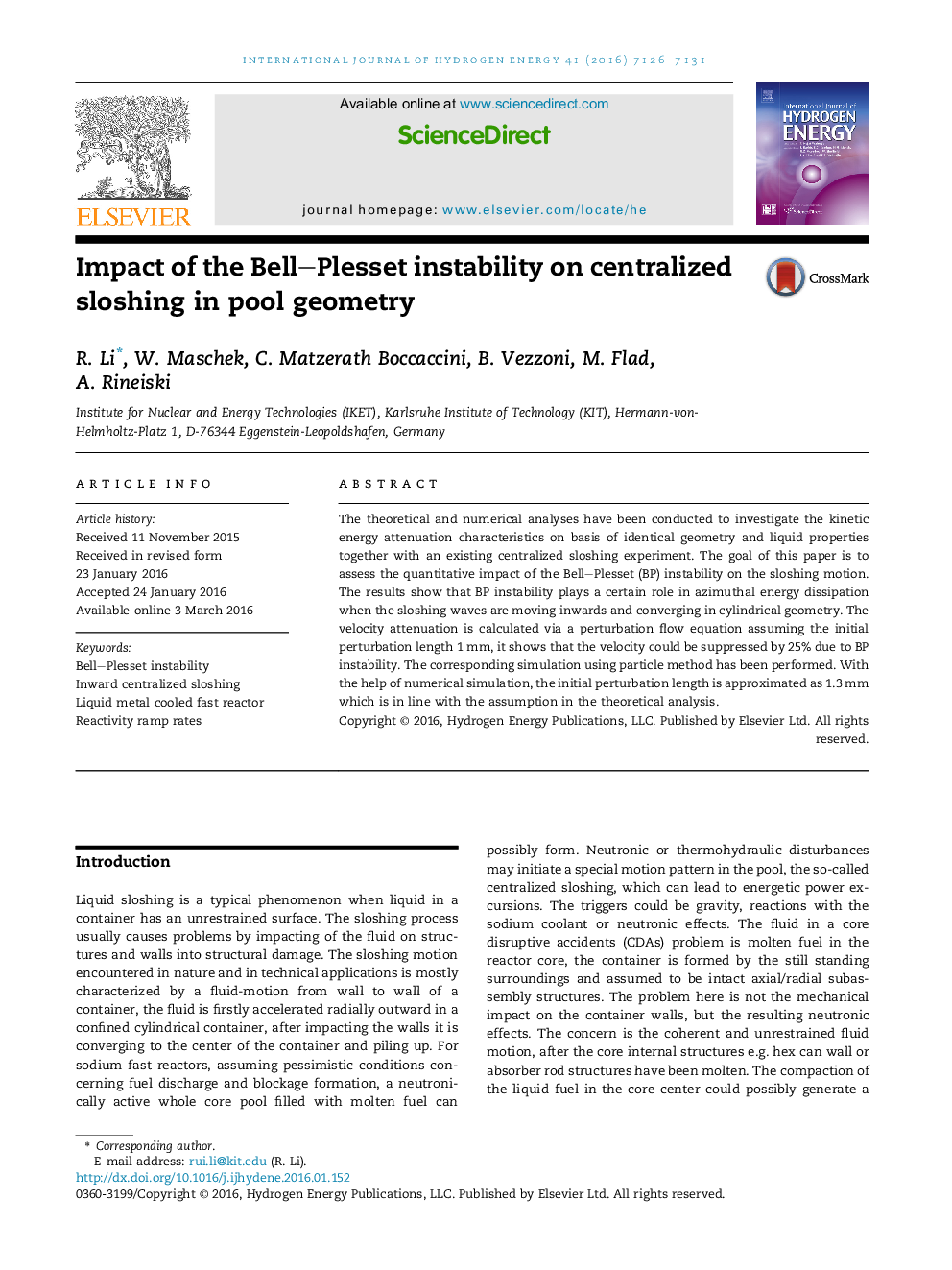| Article ID | Journal | Published Year | Pages | File Type |
|---|---|---|---|---|
| 1277455 | International Journal of Hydrogen Energy | 2016 | 6 Pages |
•Firstly the Bell–Plesset instability observation is shown from an existing experiment.•Secondly the theoretical analysis based on perturbation flow equation is assessed.•Finally numerical simulation has been performed for an approximation of the initial perturbation length.
The theoretical and numerical analyses have been conducted to investigate the kinetic energy attenuation characteristics on basis of identical geometry and liquid properties together with an existing centralized sloshing experiment. The goal of this paper is to assess the quantitative impact of the Bell–Plesset (BP) instability on the sloshing motion. The results show that BP instability plays a certain role in azimuthal energy dissipation when the sloshing waves are moving inwards and converging in cylindrical geometry. The velocity attenuation is calculated via a perturbation flow equation assuming the initial perturbation length 1 mm, it shows that the velocity could be suppressed by 25% due to BP instability. The corresponding simulation using particle method has been performed. With the help of numerical simulation, the initial perturbation length is approximated as 1.3 mm which is in line with the assumption in the theoretical analysis.
